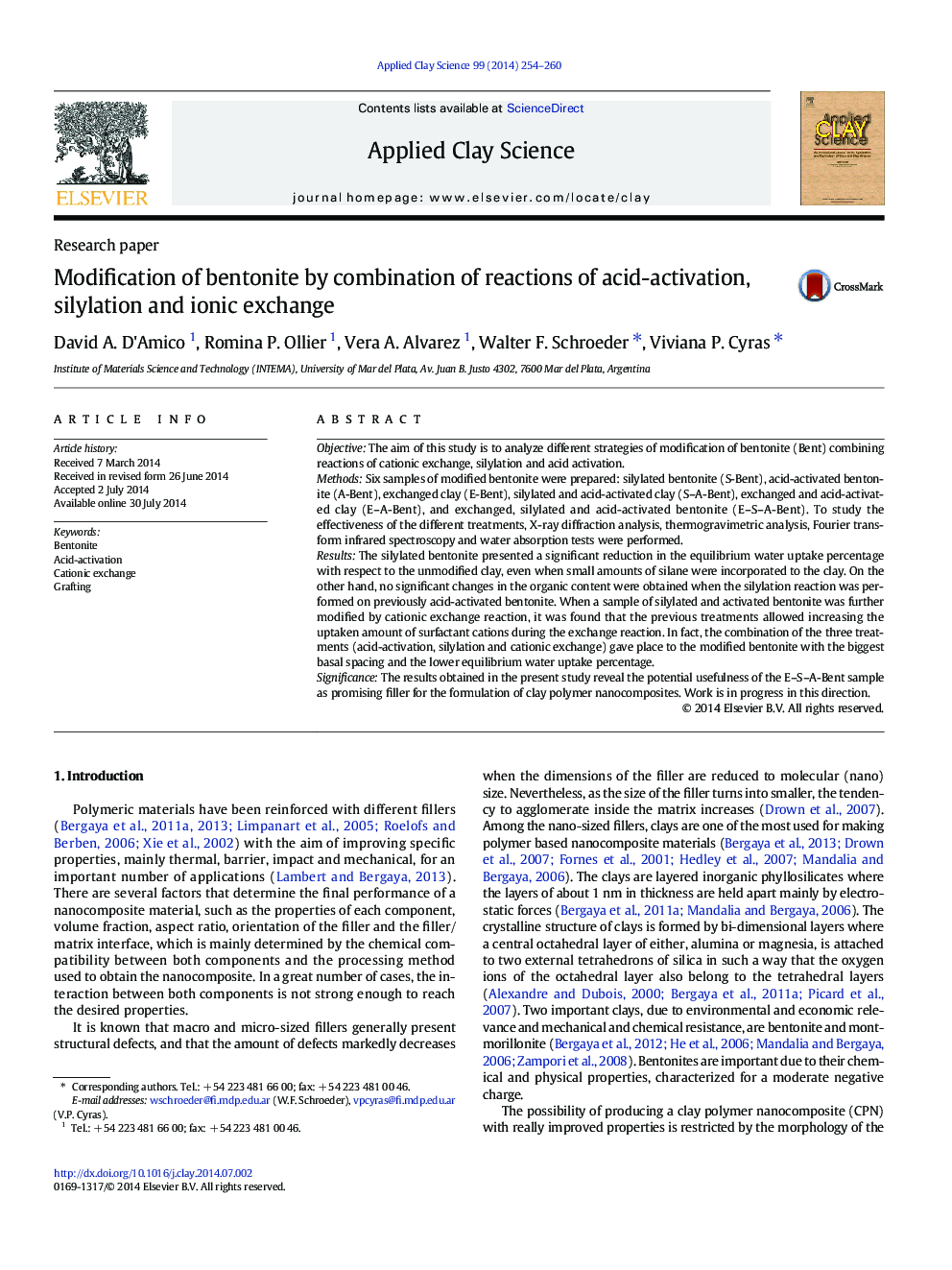| Article ID | Journal | Published Year | Pages | File Type |
|---|---|---|---|---|
| 1694757 | Applied Clay Science | 2014 | 7 Pages |
•Different strategies of modification of bentonite have been analyzed.•Reactions of cationic exchange, silylation and acid activation were combined.•After treatments the basal spacing increases and the water uptake decreases.•Acid activation followed by silylation markedly improves the cationic exchange.
ObjectiveThe aim of this study is to analyze different strategies of modification of bentonite (Bent) combining reactions of cationic exchange, silylation and acid activation.MethodsSix samples of modified bentonite were prepared: silylated bentonite (S-Bent), acid-activated bentonite (A-Bent), exchanged clay (E-Bent), silylated and acid-activated clay (S–A-Bent), exchanged and acid-activated clay (E–A-Bent), and exchanged, silylated and acid-activated bentonite (E–S–A-Bent). To study the effectiveness of the different treatments, X-ray diffraction analysis, thermogravimetric analysis, Fourier transform infrared spectroscopy and water absorption tests were performed.ResultsThe silylated bentonite presented a significant reduction in the equilibrium water uptake percentage with respect to the unmodified clay, even when small amounts of silane were incorporated to the clay. On the other hand, no significant changes in the organic content were obtained when the silylation reaction was performed on previously acid-activated bentonite. When a sample of silylated and activated bentonite was further modified by cationic exchange reaction, it was found that the previous treatments allowed increasing the uptaken amount of surfactant cations during the exchange reaction. In fact, the combination of the three treatments (acid-activation, silylation and cationic exchange) gave place to the modified bentonite with the biggest basal spacing and the lower equilibrium water uptake percentage.SignificanceThe results obtained in the present study reveal the potential usefulness of the E–S–A-Bent sample as promising filler for the formulation of clay polymer nanocomposites. Work is in progress in this direction.
Graphical abstractFigure optionsDownload full-size imageDownload as PowerPoint slide
